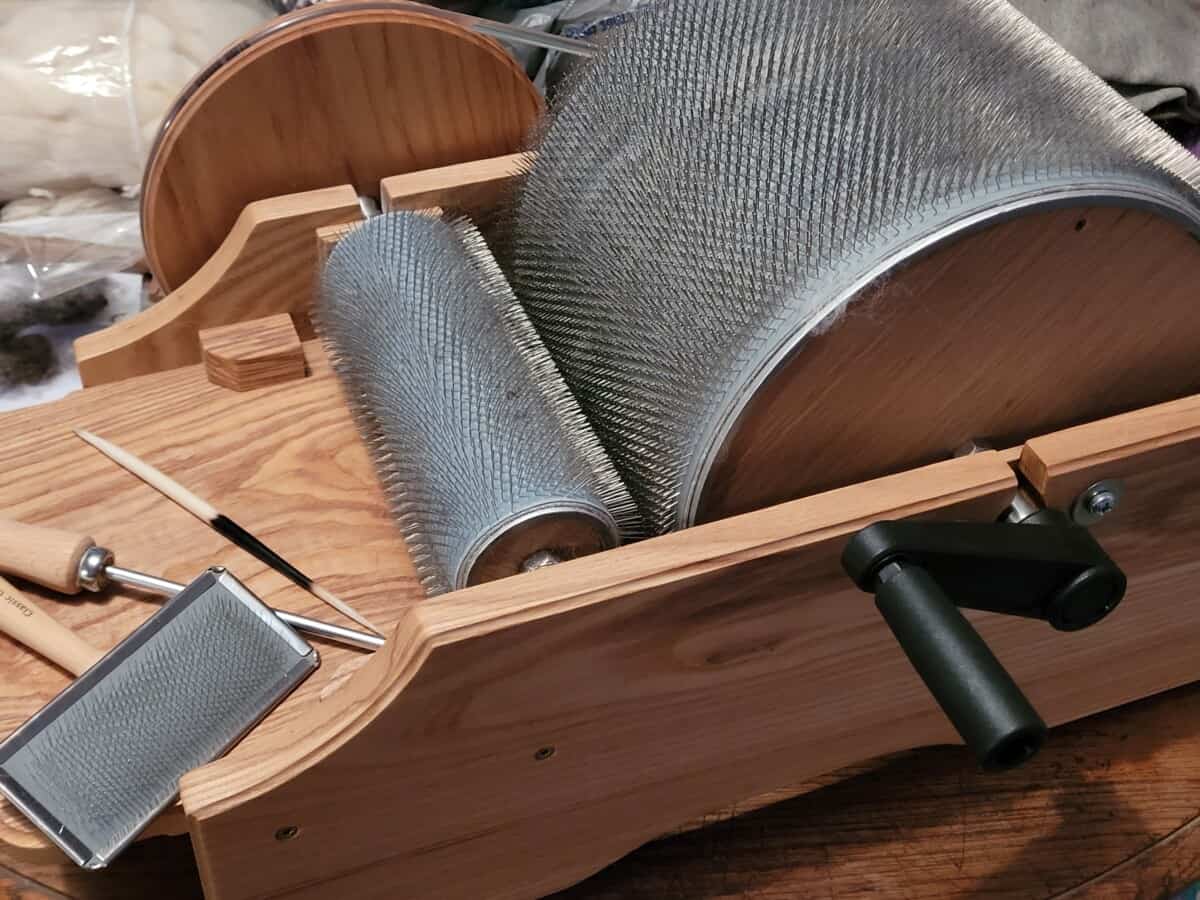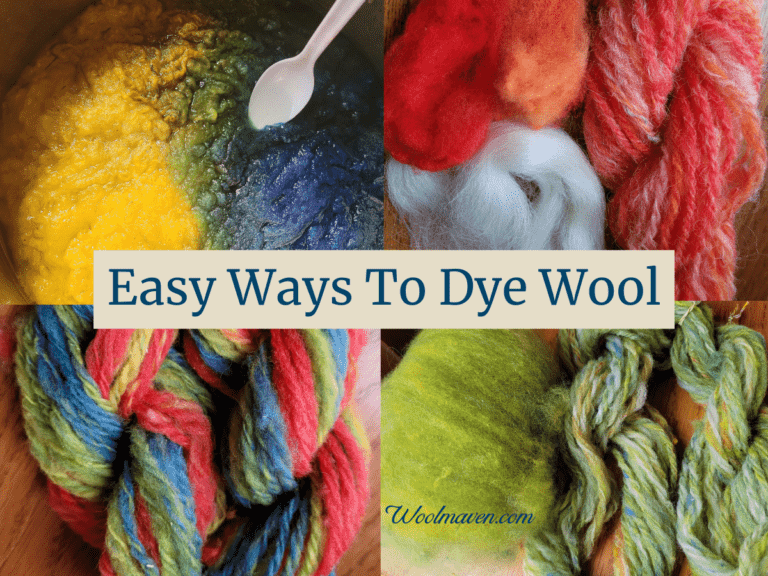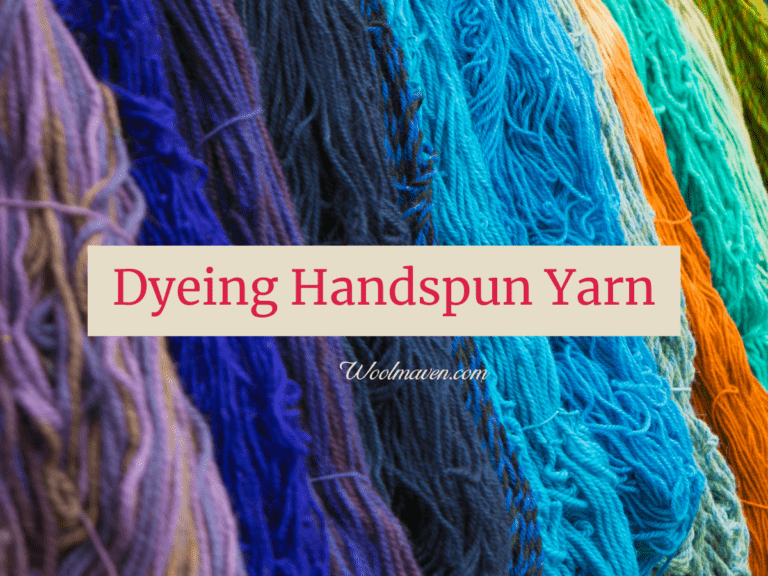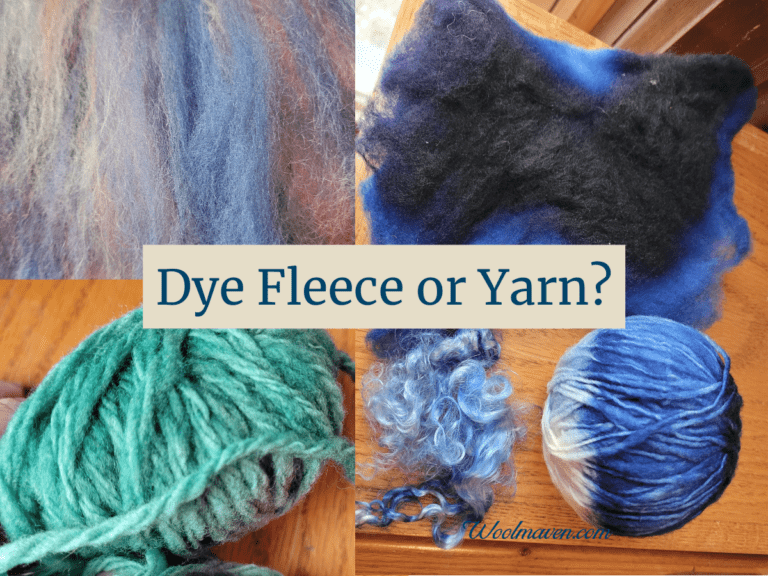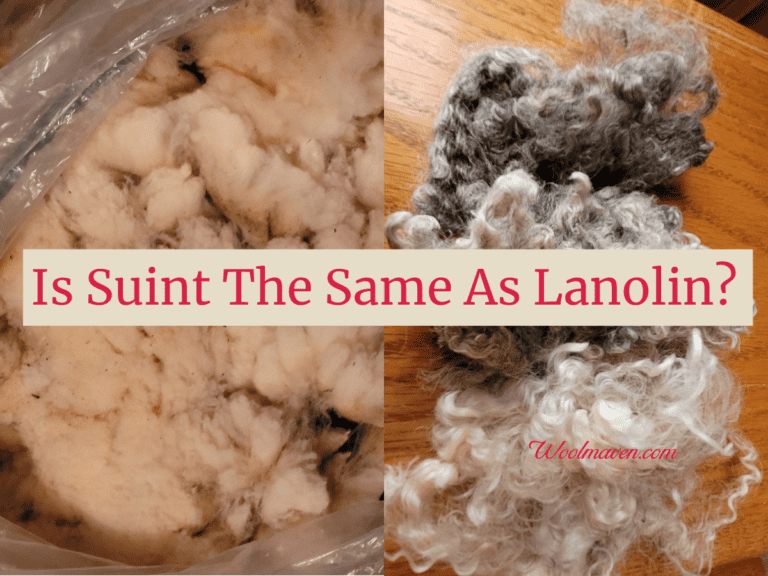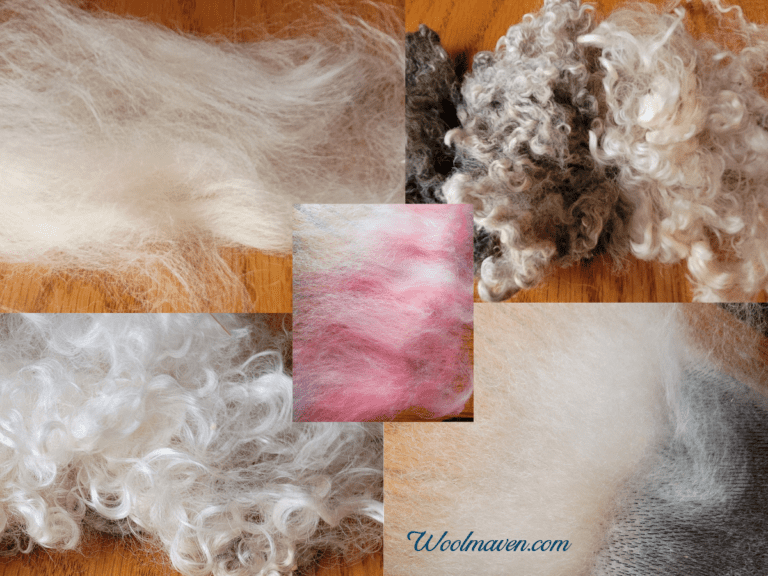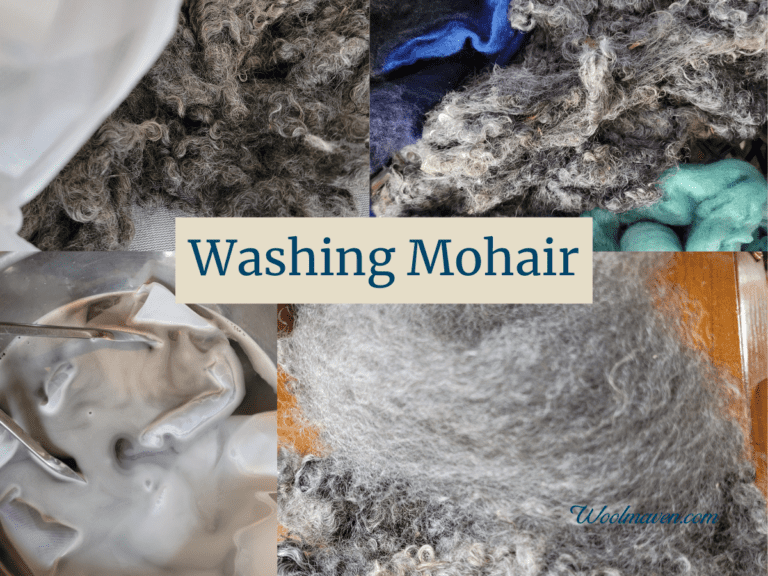How To Choose The Best Drum Carder For You
Choosing a drum carder is both exciting and confusing, at the same time!
There are quite a few brands and models to choose from, so you’ll also have a lot to sort through before you can find the drum carder that is best for you!
Let me help your sort your needs and wants by walking you through the thought process I used when I bought my drum carder.
To choose a drum carder, you need to know what fibers you will be carding and the approximate size and weight of batt you would like the drum carder to be able to produce.
Is A Drum Carder Worth It? goes over the costs and benefits of buying and using a drum carder.
| Drum carder | Size of batt | Weight of batt* |
| small | 4 inches wide | 1 ounce |
| standard | 7.5-9 inches wide | 2 ounces |
| wide | 11.75-12 inches wide | 3.5 ounces |
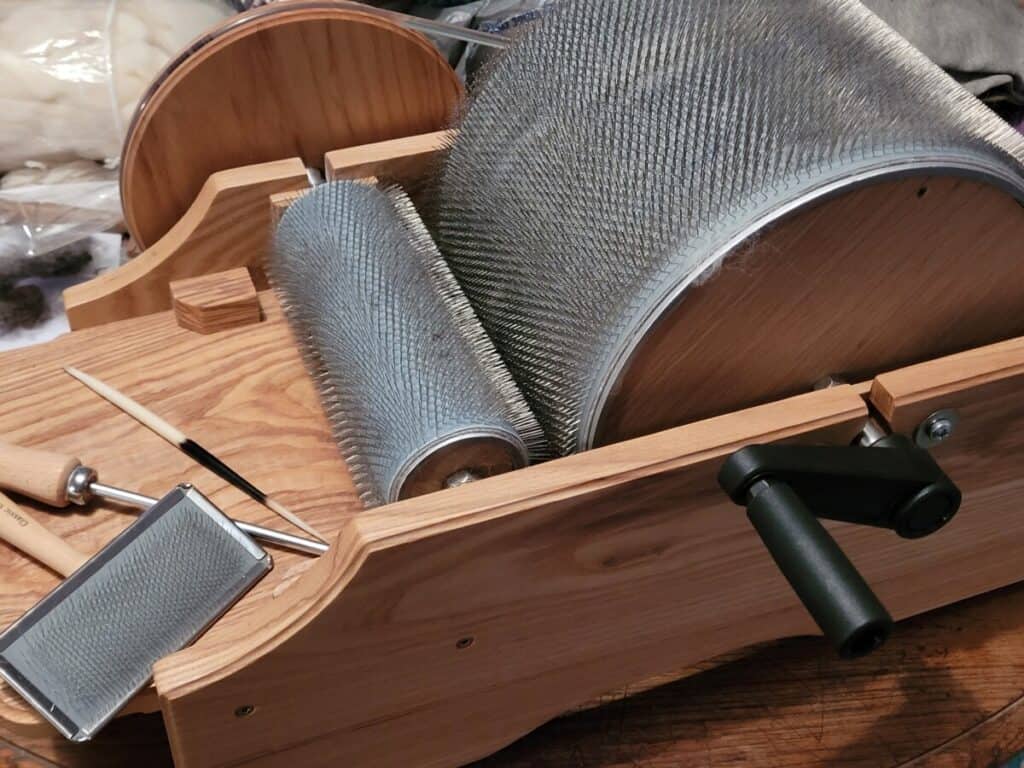
This post contains affiliate links, which means I receive commissions if you choose to purchase through links I provide (at no extra cost to you).
Choosing a drum carder
As I mentioned above, I purchased a drum carder a few months ago and I love it!
But, it did take me a while to sort through all the choices of brands and options to narrow it down to the drum carder I ended up ordering.
Hopefully, this article will make your decision process faster than it was for me!
If you want a head start on getting a great drum carder, check out the Ashford Drum Carder, with two working ratios as well as adjustable drum clearance.
Main fiber to be carded
In order to determine which drum carder will work the best for you, you need to determine the main fiber that you will be carding.
Rare, indeed, is the fiber lover who can narrow that down to just one fiber!
However, when you stop and think about your woolcraft, you probably have an area or range of fibers that you tend to work with. That’s what we’re looking for.
Here are a few questions to get you thinking:
- Are you mainly working with fine wools?
- Are you interested in making art batts?
- Is your focus color blending?
- Do you love to work with a large variety of fibers?
- Do you need it to be portable?
If you are the main fiber lover in your household, you are getting a drum carder to suit you and your needs.
Make sure you take some time and think about the things that you would like to be able to do with your drum carder and order them according to priority.
Whenever I have to think about something like this, where there really is no right or wrong answer, I make a list of all the aspects I’m considering or thinking about and rank order according to priority.
This is an easier way for me to sort my needs from my wants, especially when there are a lot of options and opinions to take into consideration.
7 Best Places To Source Wool To Spin gives you some tips on getting stocked up!
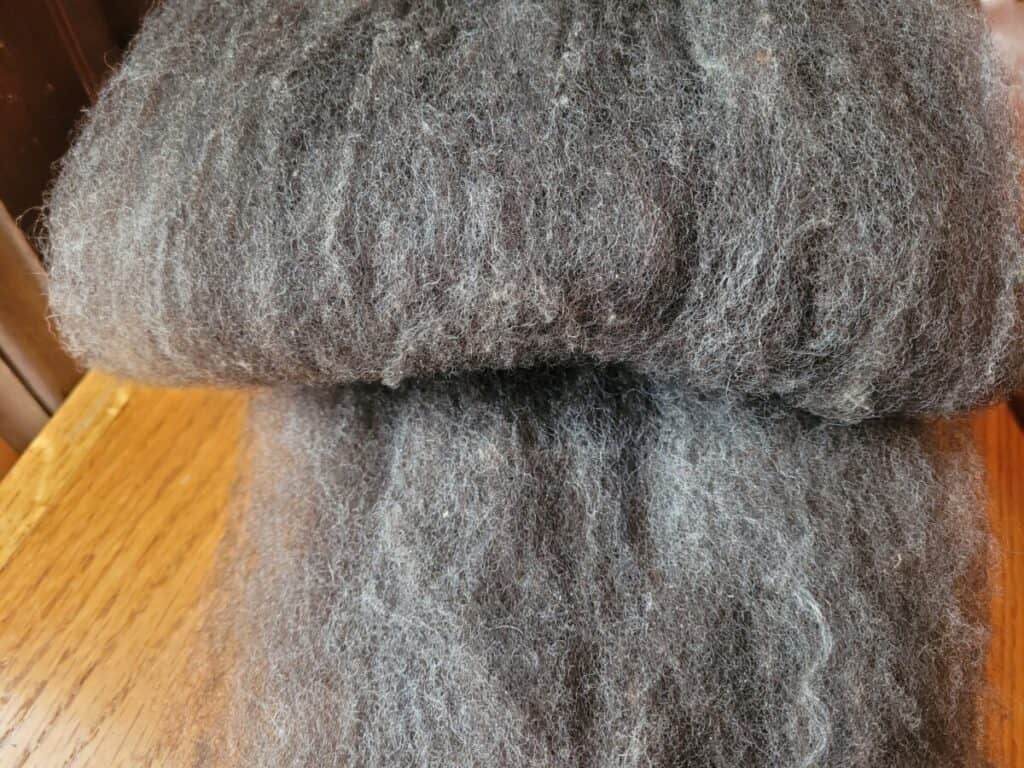
| Type of carding | Teeth per inch (tpi) |
| fine fibers | higher, 90-120 tpi |
| versatile | mid range, 72 tpi |
| art batts | mid range, 72 tpi |
| coarse fibers | low range, 48-56 tpi |
| color blending | neutral colored carding cloth |
Carding cloth teeth per inch (tpi)
Once you know the main fiber you plan to card, you can pick out the best tpi for your carding cloth. Short version-more teeth equals more finely carded.
If you are going to be working with fine wools or want really well blended colors, go with a higher tpi.
If you are going to be working with a medium or higher micron wool or want to put other things like locks in the batt, you’ll be looking to a lower tpi.
Amount of fiber to card
How much fiber are you wanting to be able to put into one batt?
Believe it or not, the amount of fiber that you can put into a bit varies quite a bit, depending on the size of the teeth in the carding cloth and if you pack the fiber onto the drum.
There is also the size of the drum to consider, where, as you have surely guessed, a bigger drum circumference makes a bigger batt.
Size of batt needed
In addition to the circumference of the swift (large drum), the other aspects of determining the size of the carded batt are the width of the drum and the length of the teeth on the carding cloth.
Size of swift
The size of the swift determines the final length and width of the batt your carder will produce.
Most drum carding makers have a few options, with a thinner batt, more of a standard size and a larger sized swift.
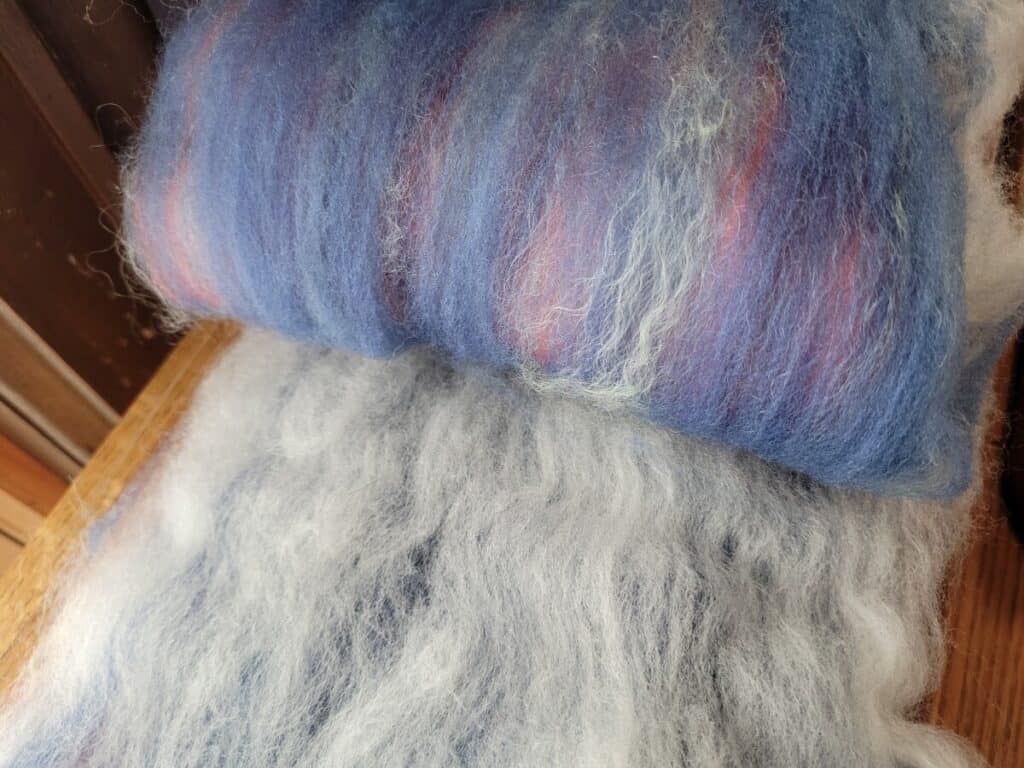
Shape of carded batt
There are basically two main shapes of rectangular batts that a drum carder will produce, long and thin or shorter and wider.
Most drum carders make a long, thin rectangle batt, rather than a fat rectangle. This batt has the fibers running the length of the batt.
Some drum carders make an especially wide batt, more of a fat rectangle or square shape that has the carded fibers running the short length across the batt.
Density of carded batt
The second aspect of size is the density of the carded batt, meaning how well packed the fibers are in the carded batt.
Packing the fibers on the swift, so that you can fit more fiber on the same batt, is done by a hand held brush or a packing brush that sits on the carder and packs as the swift turns.
Some carders come with the packing brush attached, for others the packing brush is ordered separately.
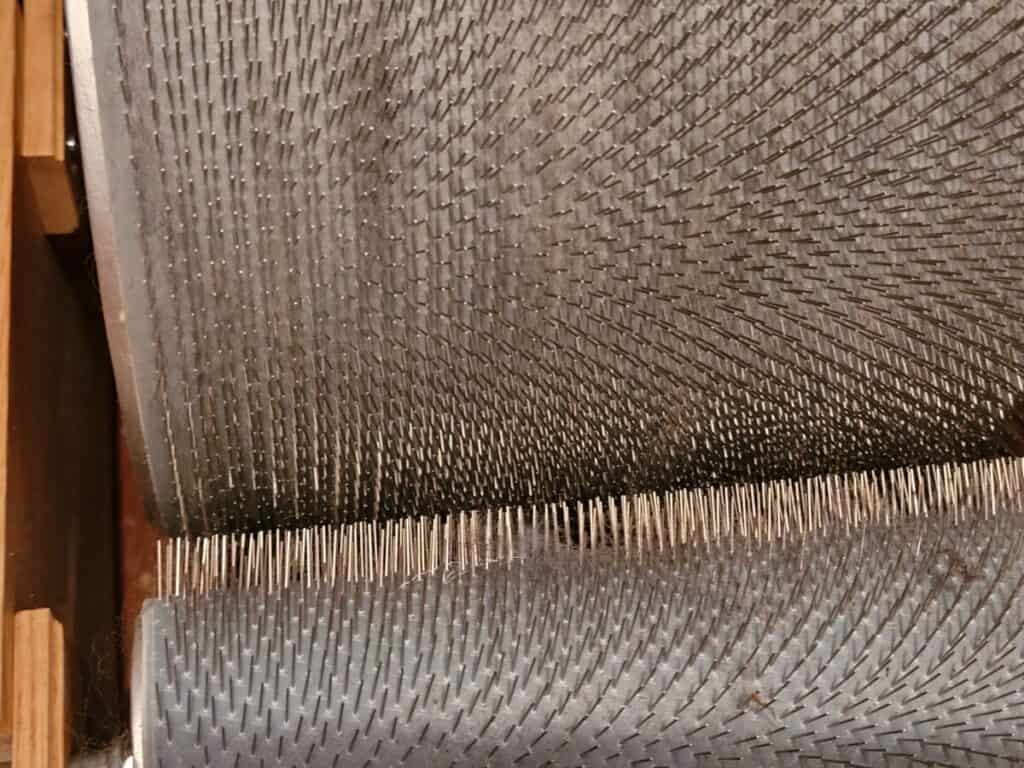
Length of teeth on carding cloth
Some drum carding manufacturers, but not all, have available for order a carding cloth with longer teeth than the standard carding cloth.
Of course, carding cloth with longer teeth has more room to hold fiber than carding cloth with shorter teeth.
Brand of drum carder
You should get your drum carder from a company that you like and trust.
I’m not here to tell you which brand is better, from what I have seen there are quite a few wonderful drum carders out there for you to choose from.
Pick the one that has the features that matter most to you and your carding needs from a company that you like to work with.
How I chose my drum carder
Choosing a drum carder was a pretty big deal for me.
First off, I was really excited to get one (I love mine!) and secondly, because I hate returning or repurchasing, so I wanted to get it right from the start.
Once I made my wants and needs list, the best drum carder for me was easier to find, since I could eliminate the ones that will not meet my requirements.
Here are a few of the things I felt that I needed in a drum carder:
- high quality craftsmanship
- standard or larger drum
- versatility in fibers the carding cloth can handle
- available, I didn’t want to be put on a huge waiting list
To hit all the items on this list, I decided to look for an established business that had larger drum sizes in a carding cloth that can take variable fibers.
Then, I moved to smaller things, at least for me, like I didn’t want to have to have the carder at the edge of a table to turn the handle and I wanted a 3.5 ounce batt.
The handle being able to turn with the drum carder in the middle of the table is just me, but the 3.5 ounce batt was more specifically thought out.
I was talking to my husband while trying to decide which drum carder size to get, once I picked out the brand I liked best.
He asked “what size do you need for your projects?” Great question! And the question that made picking the drum size easy.
If I wanted to be able to have one batt for the entire project, rather than trying to match multiple batts, then I needed to have a larger capacity drum carder.
I went with a jumbo drum (longer teeth) and a model that sits a bit higher so the handle clears the table when carding, that I purchased from Classic Carder.

